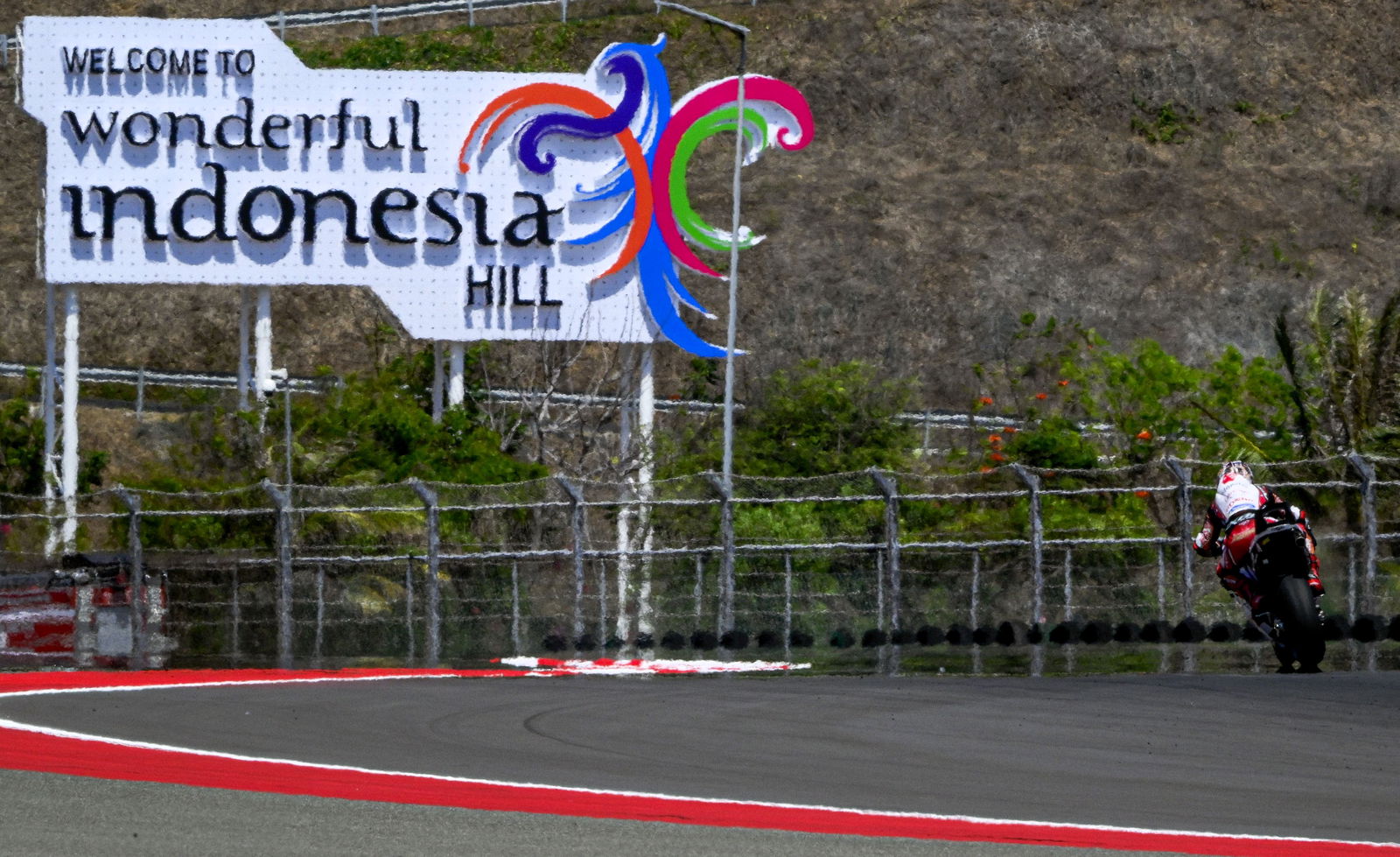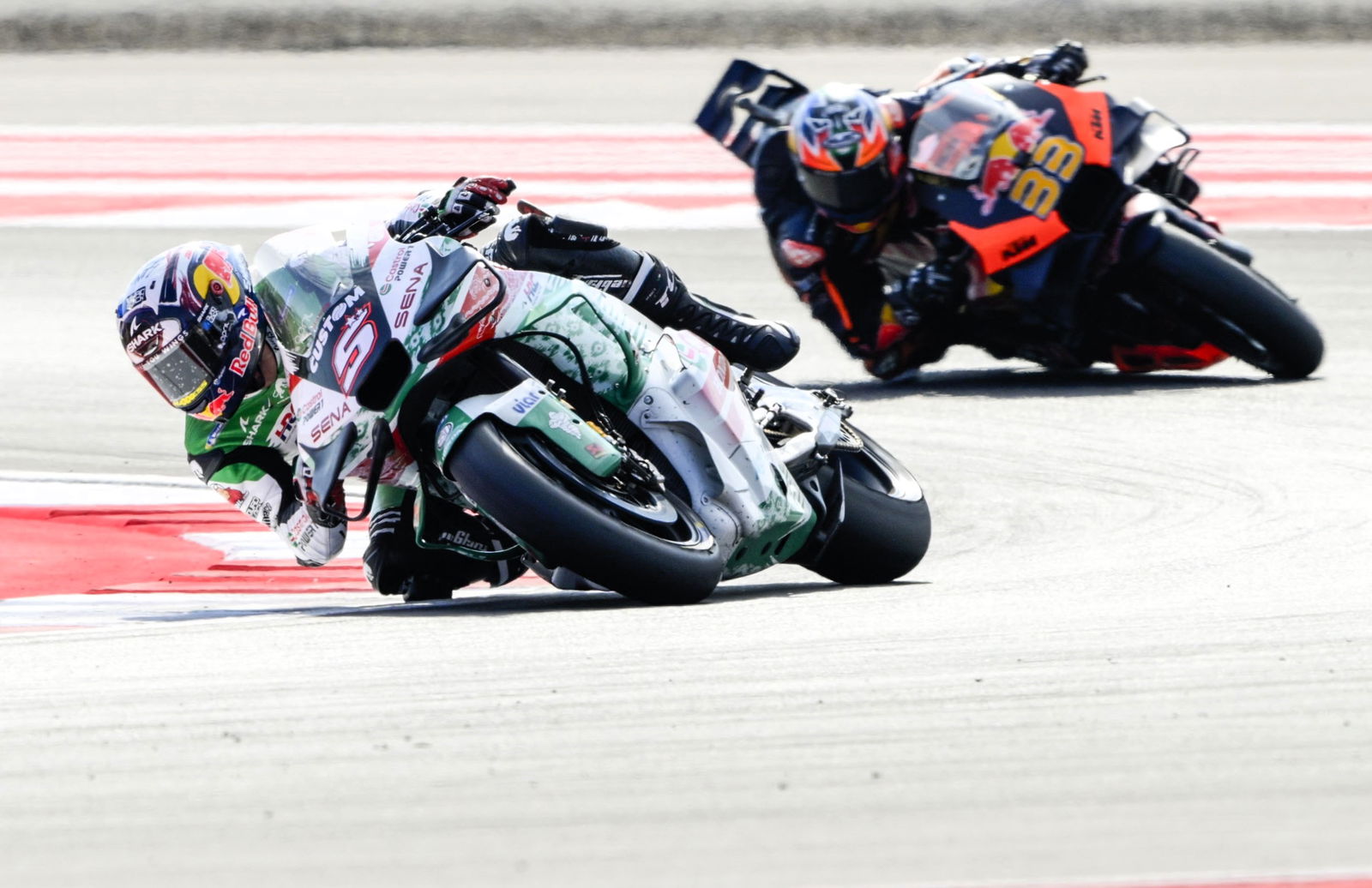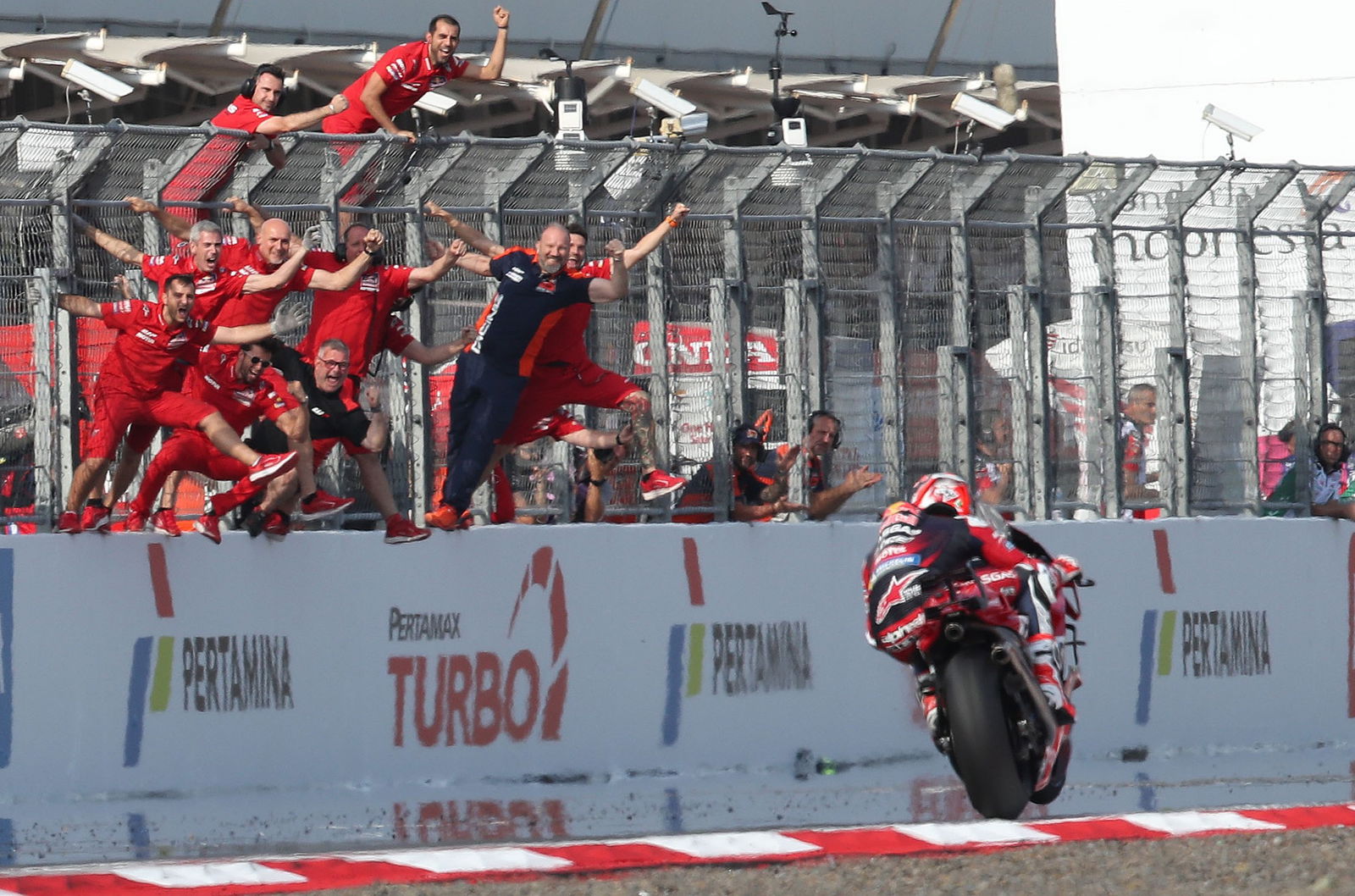Time for MotoGP to bring back the tyre pressure warning?
Would an official warning for a 'near miss' tyre pressure infringement help restore confidence in MotoGP's penalty system?

MotoGP’s complicated tyre pressure regulations returned to the spotlight when three riders were flagged for investigation at the end of last Sunday’s Indonesian Grand Prix.
Two of those, Pedro Acosta (2nd) and Brad Binder (8th), were eventually cleared, while Takaaki Nakagami (11th) was confirmed as failing to reach the 60% of race laps above the minimum pressure.
The debate over whether Acosta’s leaking wheel rim was valid grounds for escaping a penalty has been well covered (no explanation was given for Binder’s acquittal, although it seems post-race KTM data proved he was in compliance).
Nonetheless, Nakagami was the 16th rider to receive a post-race penalty over the 15 rounds (30 races) so far this year. Raul Fernandez had been the 15th, a day earlier in the Mandalika Sprint.
If that overall average continues there will be five more penalties during the remaining five rounds, potentially influencing not only the race results but title outcome.
And with Mandalika only the first of the 'flyaways', some fear the added unpredictability compared to European events means the pressure punishment rate could increase significantly.
Last year saw 17 tyre pressure infringements during seven ‘overseas’ rounds heading into the Valencia finale.
However, due to an official warning for a first offence, there was only one post-race penalty in that time. The unconditional nature of the warning also meant it was seen as a ‘joker’, encouraging teams to push the limits until they risked an actual time penalty.
With the new real-time pressure monitoring system proving reliable, the warning was removed for 2024.
Post-race penalties were also ramped up from an escalating 3-second, 6-second and 9-second scale for each breach after the warning last year, to 8-seconds for a Sprint and 16-seconds in a grand prix for every offence in 2024.
Two riders have lost podiums due to low tyre pressure: Fabio di Giannantonio at Valencia 2023 and Fabio Quartararo in this year’s Jerez Sprint.
Acosta was in danger of becoming the third, a decision that would also have influenced the MotoGP title fight. Francesco Bagnaia would have moved into second place at Mandalika, moving him four points closer to race winner and title leader Jorge Martin.
With tyre pressure influencing performance and safety, all agree that some kind of minimum pressure needs to be in place. The problem is that pressure fluctuates during a race and is hard to predict.

For example, largely due to an exceptional nine retirements on Sunday, Nakagami rode in ‘cooler’ fresh air, 6.6s behind Raul Fernandez and 6.0s ahead of Alex Rins.
The lonely race no doubt contributed to a lower tyre pressure. For comparison, Nakagami, starting in 18th, finished the Saturday Sprint race just 0.399s behind the rider ahead.
A similar scenario would occur if a rider starting deep in the grid unexpectedly finds themselves in the race lead and, worse still, pulling away.
A dashboard warning might have alerted Nakagami that he was in danger of missing the 60% of ‘legal’ race laps on Sunday.
But his only option in terms of finding a slipstream to heat the front tyre would have been to pull over and wait six seconds, making his tyres even cooler and lowering the pressure even more.
Most would like something much simpler than the current real-time measurement, which calculates the average tyre pressure over each lap. A lap is ‘compliant’ if the average is at least 1.8 bar for the front and 1.68 for the rear.
Perhaps the growing amount of real-time data will allow a mandatory starting minimum pressure to be set in future.
But until then, should MotoGP consider re-introducing an official warning for a first offence – with the caveat that it can only be used if a rider is close to reaching the minimum?
In other words, make the margin big enough to act as a safety net for some unforeseen occurrences, but small enough that it would be far too risky for a team to deliberately exploit the warning as a ‘joker’ (as in 2024).
The exact pass/fail rate of laps for tyre pressure is not published, so we don’t know how close each punished rider got to being legal. But maybe manufacturers might agree to something like:
One official warning to be issued only if at least 55% of grand prix laps are legal.
It could also be expanded to take account of random scenarios like being forced off track, crashing and re-joining, or a significant drop of air/track temperature during a race.
Such a warning might not have been enough to help Nakagami but it could be set at a level that reduces ‘near-miss’ penalties and, hopefully, lowers the risk of the 2024 title fight being decided after the chequered flag...


